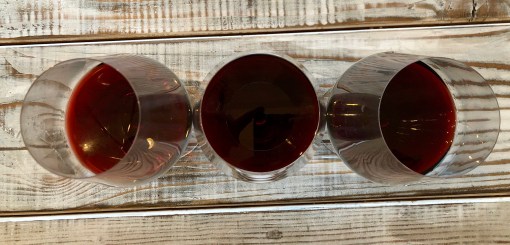By Peter Vetsch
[These bottles were provided as samples for review purposes.]
If I was to tell you that I was drinking the current release of a mid-tier offering from a well-regarded producer and from a name region, made from 70-110 year-old vines, and that the vintage date on the bottle was 2006, what would you guess the region was? Rioja – maybe a Reserva offering from a traditional-minded producer? Champagne, if you are extremely liberal with your definition of “mid-tier”? Somewhere in Italy? Portugal? You would probably be most of the way through the global wine region Rolodex before you landed on Mendoza, Argentina, and once you did, you would probably immediately discard the possibility, knowing this to be the heart of bold, fruity, approachable Malbecs that are released and enjoyed in their youth. Bodega y Cavas de Weinert, and its current-inventory $25 old-vine 2006 Malbec, will cause you to re-evaluate all of your presumptions; they are an anachronism in all the best ways.

This classical estate actually has a rather recent history: the winery dates back to 1890, but its current identity was tied to its acquisition by Brazilian Bernardo Weinert in 1975. Swiss winemaker Hubert Webber has been at the helm since 1996, when he was ensconced at the ripe old age of 27; his mission has been to craft wines from Malbec, Cabernet Sauvignon and Merlot wines that avoid early showmanship and start to reveal themselves after a decade or more, as it is only then that the Bodega will release them to market. Lengthy barrel aging (up to 5-6 years in large oak foudres in Weinert’s cool granite cellars), then further time in bottle pre-release, is the estate’s hallmark — Weinert follows the old-school Spanish model of only allowing his wines into the public sphere when they are deemed ready to drink, whether or not this follows the standard chronological vintage release playbook. In other words, don’t necessarily assume that the 2007 will follow the 2006 as the next wine on the shelf.

The relatively modest prices of the finished wines might be reflective of advantageous land and labour costs in Argentina, but they are not the result of any lack of care in the vineyard: Weinert’s vineyards, located in Mendoza’s top subregion of Lujan de Cuyo, feature largely ungrafted own-rooted vines that are a minimum of 25 years old and are exclusively hand-harvested. Fermentation takes place in cement tanks, and Weinert’s cellar boasts both the largest barrel in Argentina (44,000 L) and the oldest barrel in the world, each of which are a reminder that the goal of the Weinert wines’ extended time in barrel is not wood flavour transference (which increases the newer and smaller the barrel is), but gentle, lightly oxidative maturation. I had the opportunity to taste a trio of Weinert offerings, all 12-13 years old (as is par for the course in this particular corner of Mendoza), to explore this wholly unique take on Argentinian viniculture. Malbec first, as always. Read the rest of this entry »















